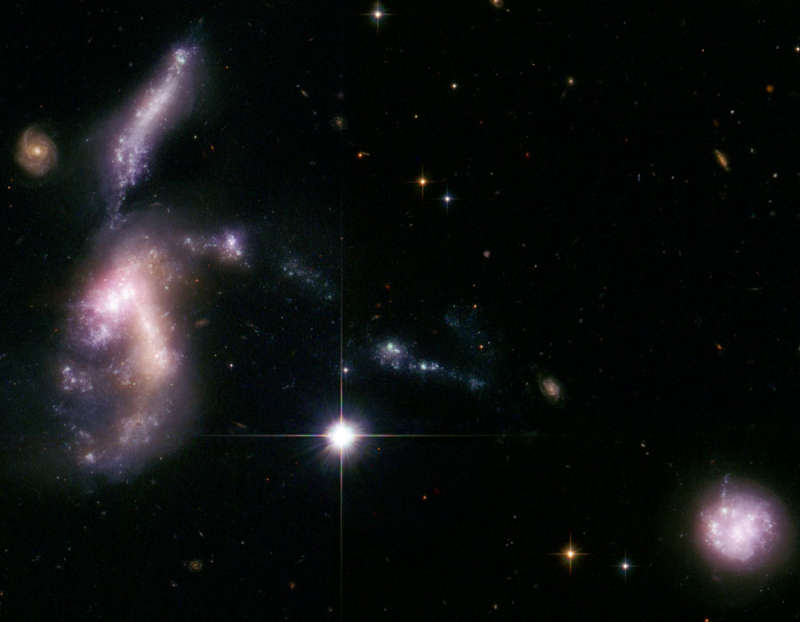
|
Credit: NASA,
ESA,
J. English
(U. Manitoba), and the Hubble Heritage Team
(STScI/AURA);
Acknowledgement: S. Gallagher (U. Western Ontario)
Explanation:
Will the result of these galactic collisions be one big
elliptical galaxy?
Quite possibly, but not for
another billion years.
Pictured above, several of the
dwarf galaxies of in the
Hickson
Compact Group 31 are seen slowly merging.
Two of the brighter galaxies are colliding on the far left, while an
elongated galaxy above is connected to them by an unusual
bridge of stars.
Inspection of the above image further indicates that the bright duo trail a rope of stars pointing
to the
spiral galaxy on the far right.
Most assuredly, the pictured galaxies of Hickson Compact Group 31 will pass through and destroy each other, millions
of stars will form and
explode, and thousands of
nebula will
form and dissipate before the
dust
settles and the final galaxy emerges about one billion years from now.
The above image is a composite of images taken in
infrared light
by the
Spitzer Space Telescope,
ultraviolet light
by the GALEX space telescope, and
visible light
by the Hubble Space Telescope.
Hickson Compact Group 31 spans about 150 thousand
light years and lies about 150 million light years away toward the constellation
of
Eridanus.
Acknowledgement: S. Gallagher (U. Western Ontario)
|
January February March April May June July August September |
| |||||||||||||||||||||||||||||||||||||||||
NASA Web Site Statements, Warnings, and Disclaimers
NASA Official: Jay Norris. Specific rights apply.
A service of: LHEA at NASA / GSFC
& Michigan Tech. U.
Based on Astronomy Picture
Of the Day
Publications with keywords: group of galaxies
Publications with words: group of galaxies
See also:
